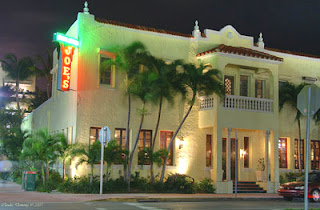This is going to be kind of a mashup of three articles I've read recently. They're written by, or about, interesting and accomplished women.
So first of all, you recognize Linda Carter as Wonder Woman of course. Jill Lepore wrote a piece in the New Yorker about her history. There's a firewall, subscribers only, so I'll just summarize a little of it. Wonder Woman was created in 1941 by William Moulton Marston, "a psychologist with a PhD from Harvard. A press release explained, 'Wonder Woman was conceived ... to set up a standard among children and young people of strong, free, courageous womanhood; to combat the idea that women are inferior to men, and to inspire girls to self-confidence and achievement in athletics, occupations and professions monopolized by men' because 'the only hope for civilization is the greater freedom, development and equality of women in all fields of human activity.'" This was only a few years after Superman and Batman were introduced.
Lepore traces Wonder Woman's origins to what she calls "feminist utopian fiction," which centered on Amazonia. The Amazons of Greek myth escaped to an island when men tried to make them slaves, and there they lived happily in their matriarchal society. It's also part of the story that the Amazons cut off one breast, the better to handle a bow and arrow. So the Wonder Woman that we know is actually quite anatomically incorrect. But what I really found interesting is that Wonder Woman was inspired by Margaret Sanger, the early champion of (then illegal) birth control, who was a member of Marsten's family.
Today in the New York Times (another firewall, sorry) an article that coincided nicely with Lepore's, and this was all new to me as well. A professor, coincidentally also at Harvard, named Amy Cuddy, gave a TED talk that is the No. 2 most viewed of all time. The talk is on "power poses" and she references the Wonder Woman pose, that is, legs apart, hands on hips, head held high, as the key to better self-esteem, better mood, better work habits, more success. Even just visualizing a more confident pose seems to work. "Women often shrink in public settings, she said. The men in her Harvard classes shoot their arms straight up to answer questions, while the women tend toward a bent-elbow wave. Along with touching the face or neck or crossing the ankles tightly while sitting 'these postures are associated with powerlessness and intimidation and keep people back from expressing who they really are,' Ms. Cuddy said."
Even the way you get up in the morning can make all the difference in your day. Don't just rise from a fetal position- stretch your arms and legs out, and you will feel more optimistic. Sounds good. I'm going to try it, it can't hurt, right?
Now for the bad news. An article recently posted on artnet was titled "We Asked 20 Women "Is the Art World Biased?" Here's What They Said." And here's where I want to scream. Because no matter how much we talk about this, no matter how many women are now museum curators, the statistics concerning women artists are stubbornly unchanged, or nearly so. See another post on artnet: "Art World Bias by the Numbers." Women run just a quarter of US art museums with budgets over
$15 million. Those leaders make just 71 cents for every $1 earned by men. New
York magazine critic Jerry Saltz did his own tally of Artforum ads
in the September issue: Of 73 ads for New York galleries, 11 were for solo
shows by women—15 percent of the total." Women make up half of the graduating
classes in art schools. So where do they go? What do they end up doing?
The reasons are largely market driven- male artists
bring higher prices for their work than female artists. But there are biases
ingrained in aesthetics as well, with a woman's "point of view" not
valued as highly. Further consider the age factor, which exists for women but not for men.
I quote Margaret Harrison's response on the first artnet article:
As a pioneering third wave feminist artist, now
observing the fourth wave (I count down from Mary Wollstonecraft and her A
Vindication of the Rights of Woman), from a cursory observation, it still does
exist. Even taking into account that the 2010, 2012, and 2013 winners of the
Turner Prize were women, in its history since 1984 there have been 24 men to
six women receiving the award. On a personal note, in 2013 I was awarded the
Northern Art Prize, (known as the Turner Prize of the North). This prize, which
doesn’t have an age limit—as in the case of the Turner—so is a non-ageist
award, turned into an ageist event anyway. Nearly all the press, including the
BBC, responded with the phrase “Pensioner wins the Northern Art Prize.” Now,
there had been at least one male artist over the age of 50 (albeit not as old
as myself) who had previously won the award, but age was not even discussed. It
took the shine off the award [for me], as it intimated that it wasn’t about
quality but more about the age of a woman artist. I subsequently was awarded
one of the Paul Hamlyn [Foundation Awards for] Artists and there was no mention
of age or gender, for which I will be forever grateful.
—Margaret Harrison, Artist
It's going to take a lot more than power poses to make a dent in the status quo. But Wonder Woman doesn't give up.




















